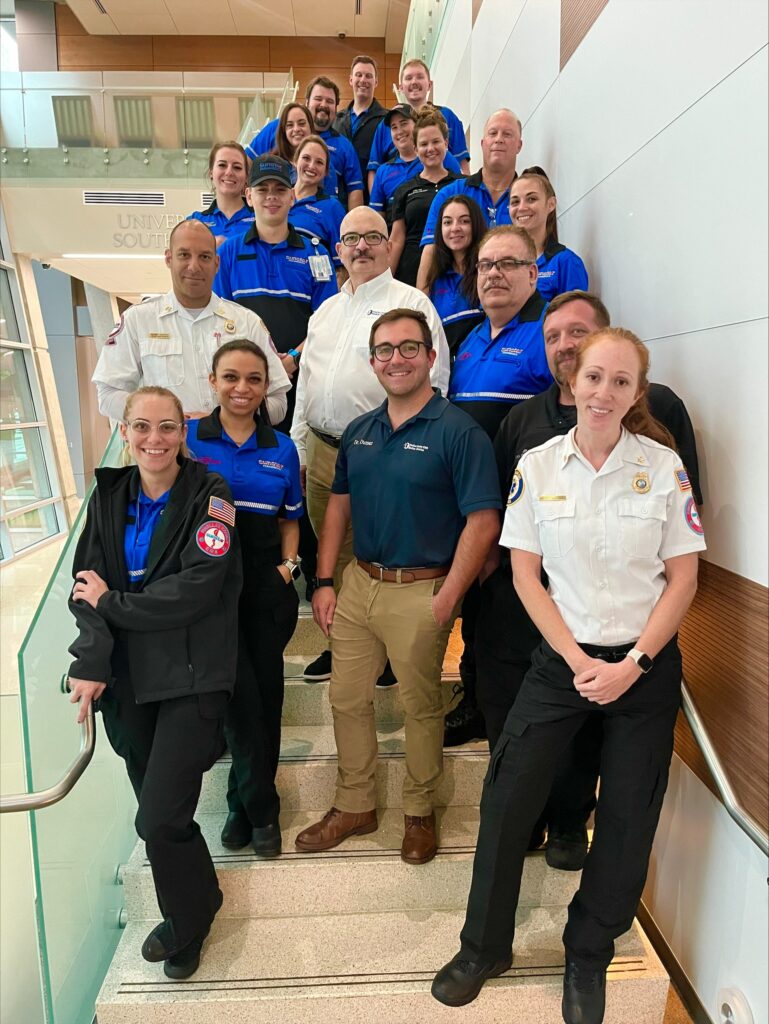College students, families and local residents flock to Pinellas County beaches to spend spring break splashing in the waves and relaxing in the sun. A record 5.9 million visitors have stayed in Pinellas County over the past year, crowding area beaches and waterways and adding to the pedestrian and vehicle traffic in popular tourist destinations.
An unexpected emergency can ruin a fun beach outing. Follow these safety tips can prevent accidents on the beach and in the water:
Be cautious in deep water. Many beach emergencies involve inexperienced swimmers who underestimated the water’s depth. Waves and tides can change water levels and quickly sweep swimmers into deeper water than they can handle.
Sandbars seem like a safe place to bask in the sun while being cooled by waist-deep water. Incoming tides will raise the water level throughout the day. Visitors become stranded on the sandbar when the water surrounding the sandbar becomes too deep to return to shore.
Always swim with a friend. They may be able to help in emergency situations by assisting an injured swimmer to shore or calling for help.
Keep your kids safe. Kids need two things to stay safe at the beach: a life jacket and adult supervision. A life jacket will help keep a child’s head above the water if they venture out too far or get caught in a large wave.
Keep a close eye on your kids. Waves, even small ones, can easily knock them over. Kids can quickly dart from the safety of the sands into deep water. Kids should never swim in the ocean alone, even if they are wearing a life jacket.
Take a CPR course. At least one person in your family, or group, should be CPR certified. CPR can be a life-saving procedure in the event of an accident. Sunstar Paramedics offers CPR classes every month in Pinellas County. Visitors planning a trip to Tampa Bay should take a class in their local area before visiting; check with the local American Red Cross chapter for class availability.
Swim in front of lifeguards. Pinellas County beaches have lifeguards on duty from March to Labor Day weekend, but individual cities and privately owned beaches may have different policies. Visitors should research the beach ahead of time to see if there will be a lifeguard present.
Inexperienced swimmers and kids should only use hotel pools with supervision as many hotel pools do not have lifeguards on duty.
Don’t drink and swim. Spring break coincides with increased alcohol consumption. Alcohol impairs judgment, and swimming under the influence can be dangerous. Impaired swimmers may misjudge the water’s depth or not realize when they’re tired. Risky behaviors, like diving headfirst into shallow water, are more likely to happen after alcohol consumption. Stay on shore when drinking alcohol and drink water between alcoholic beverages to keep hydrated.
Do the stingray shuffle. Stingrays can blend into the sand; swimmers should shuffle their feet while walking in the water to avoid stepping down on one. Stingrays are not naturally aggressive, but they may cut your leg with their tail when stepped on.
Be cautious with boats or jet skis. Boats and jet skis are available for rent at various locations in Pinellas County. Boat rentals require a special course and boating license, while jet skis can be rented by anyone, meaning the drivers have little to no training on how to operate them safely.
Many jet ski operators don’t realize that they lose steering ability after letting go of the throttle, resulting in crashes with piers, rock formations, other watercraft or sandbars.
Anyone on a jet ski or boat should wear a life jacket at all times, and operators should never drink while operating water craft.
Swimmers should avoid areas with boat or jet ski activity. It can be difficult for boat and jet ski drivers, especially novice operators to see swimmers in the waves. The safest strategy is to swim in an area designated for swimming and away from boat and jet ski traffic.
Watch out for pedestrians. An increase of beachgoers will also result in high vehicle traffic and more pedestrians walking near the beaches. Drivers should be prepared for impaired pedestrians that may sway into the road or don’t use the crosswalks. Stay alert to other cars on the road that may make sudden turns due to an unfamiliarity with the area.
Pedestrians should always use designated crosswalks and look both ways while crossing to watch for oncoming cars. Don’t assume a car will see you as it’s approaching the crosswalk. The safest plan is to wait for the car to pass before attempting to cross the street.



